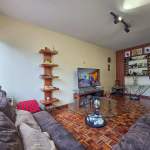Tossing and turning because your house feels like a sitting duck for trouble? You’re not alone. Whether it’s the creaky back door, the weird Wi-Fi glitches, or the motion light that seems to sense ghosts, there’s no shortage of little home vulnerabilities that can keep your brain running circles at 2 a.m. But instead of just living with the anxiety or putting off the fixes for “someday,” it’s time to take control. Let’s evaluate the five areas you’ll want to look at if you’re serious about turning your home into a place of calm instead of concern.
Guarding Your Home Internet
We live in a world where your doorbell, fridge, and even your thermostat might be online. That convenience comes with a catch: the more connected your home, the more doors you’ve opened—digitally, at least. That’s why the first vulnerability to check is your home internet. Left unsecured, it can give bad actors access not just to your files, but to your smart devices, your security system, and even your camera feeds.
So, what’s the fix? It starts with the basics: strong, unique passwords for your router and devices, updated firmware, and encryption settings turned on. Then, go a step further by segmenting your network—put your smart home devices on one and your work or personal computers on another. Many routers make this possible with a guest network feature.
Secure Your Home
Let’s talk about real-world security—not just stickers in the window or a single camera pointed at your porch. If you’ve ever wondered how to secure your home in a way that actually makes it less vulnerable, the answer isn’t just more gadgets. It’s about layering your defenses, so intrusions become less likely and more difficult.
Start by thinking like a would-be intruder. What are the blind spots? Is the side gate locked? Can someone walk up to your back patio without triggering a light? Smart cameras should be placed in high-traffic entry points—like front doors, back doors, driveways, and even inside looking at key access points. Choose models that notify you in real time and store footage in the cloud so you can always review what’s happened.
Motion-activated lights, reinforced door frames, window locks, and even landscaping that doesn’t provide convenient cover can make a big difference. The key is to combine visibility with deterrence.
Your Garage Could be a Sneaky Entry Point
One area homeowners often forget about is the garage. It’s a vulnerable spot because it usually connects directly to the house—and let’s be honest, many of us forget to lock that interior door. Add in smart openers, extra remotes, or even a carelessly stashed keypad code, and you’ve got an easy route inside for someone who’s paying attention.
The fix here is multi-layered. First, treat the garage like any other exterior door by reinforcing the lock on the interior access door and adding a sensor or camera to monitor it. If you use a smart opener, make sure it’s on a secure network and not something easily hijacked. Turn off the power to the opener when you’re away for long periods, and never leave a remote clipped to the visor in your car.
Don’t Forget the Windows
Windows are beautiful, but they can also be an easy way in if not secured properly. First-floor windows, basement windows, and even second-floor windows that can be accessed by roof or balcony should all be considered potential weak points. They’re often unlocked, unmonitored, and partially hidden by shrubs or fencing.
Reinforcing them doesn’t require ugly bars or high-end gadgets. Simple strategies like locking windows every time they’re closed, using break-resistant film, or installing window sensors can go a long way. Some homeowners even use dowel rods or window pins to limit how far a window can be opened from the outside, which is helpful in the summer when ventilation is a must.
Your Outdoor Space can Help or Hurt Security
That carefully maintained front garden and the hedge-lined backyard might look great, but if they’re blocking your view or offering hiding spots, they’re not helping your home’s security. Landscaping is often overlooked when it comes to shoring up vulnerabilities, but it plays a bigger role than you might think.
Trim bushes near doors and windows so they don’t offer cover. Add lighting to walkways and corners where people can move unseen. Use gravel in places where you want to hear movement—like a side path or under a window. The crunch of footsteps can be surprisingly effective as a low-tech alert system.
Lynn Martelli is an editor at Readability. She received her MFA in Creative Writing from Antioch University and has worked as an editor for over 10 years. Lynn has edited a wide variety of books, including fiction, non-fiction, memoirs, and more. In her free time, Lynn enjoys reading, writing, and spending time with her family and friends.















